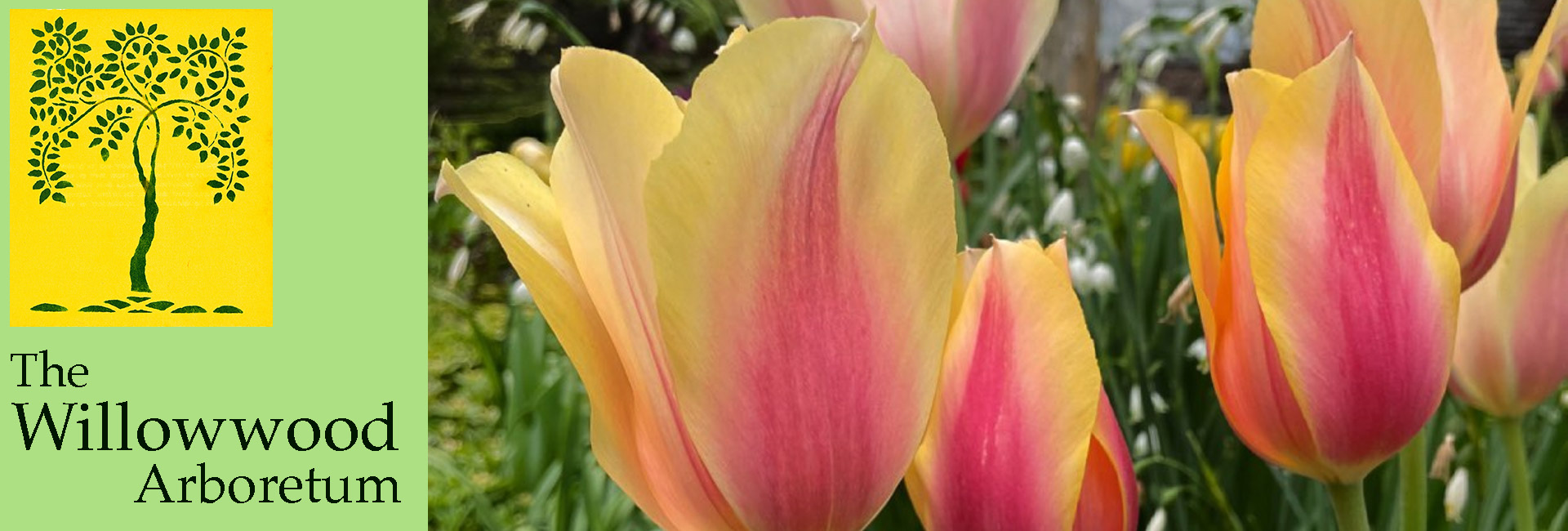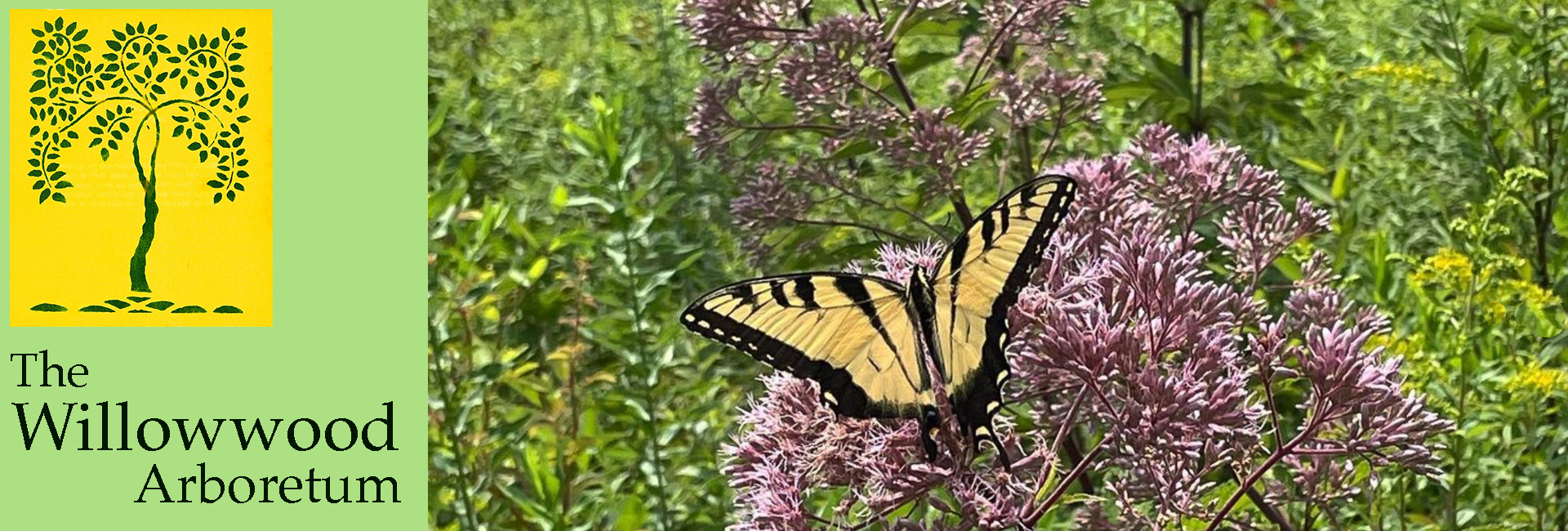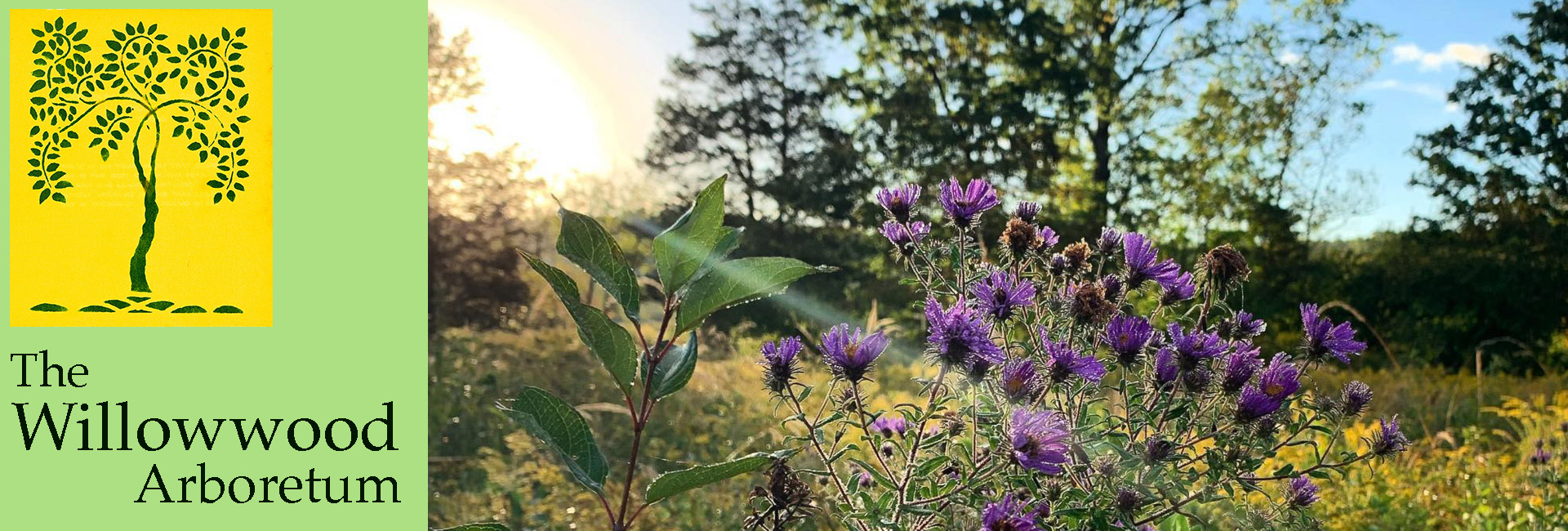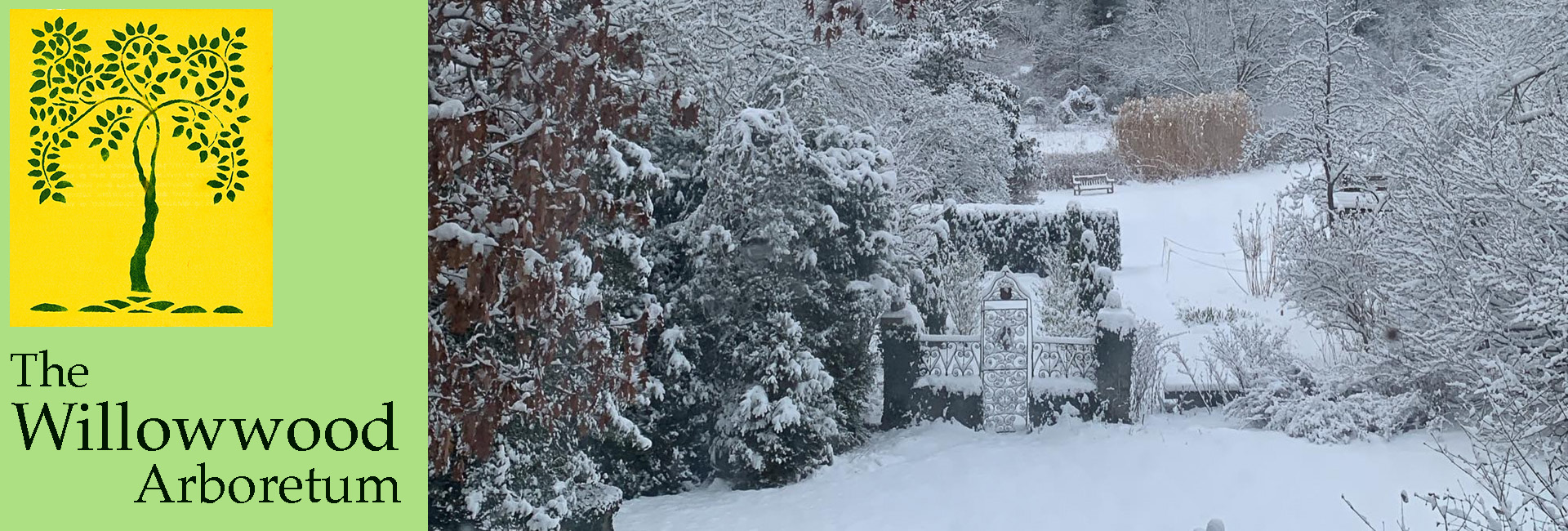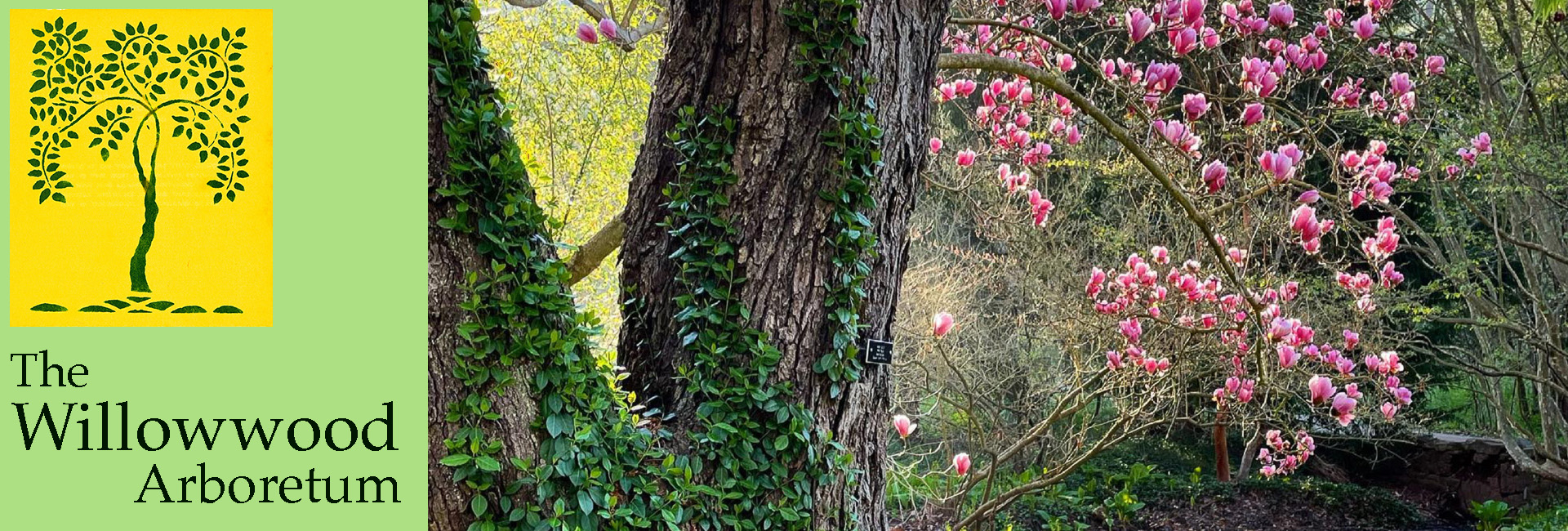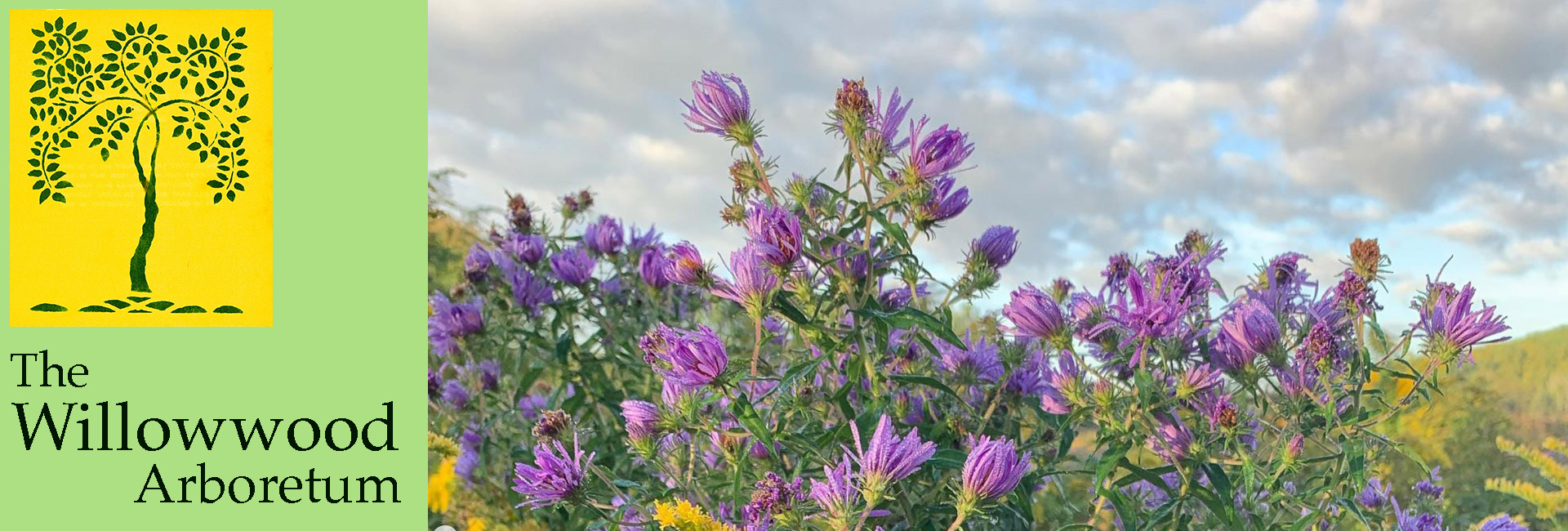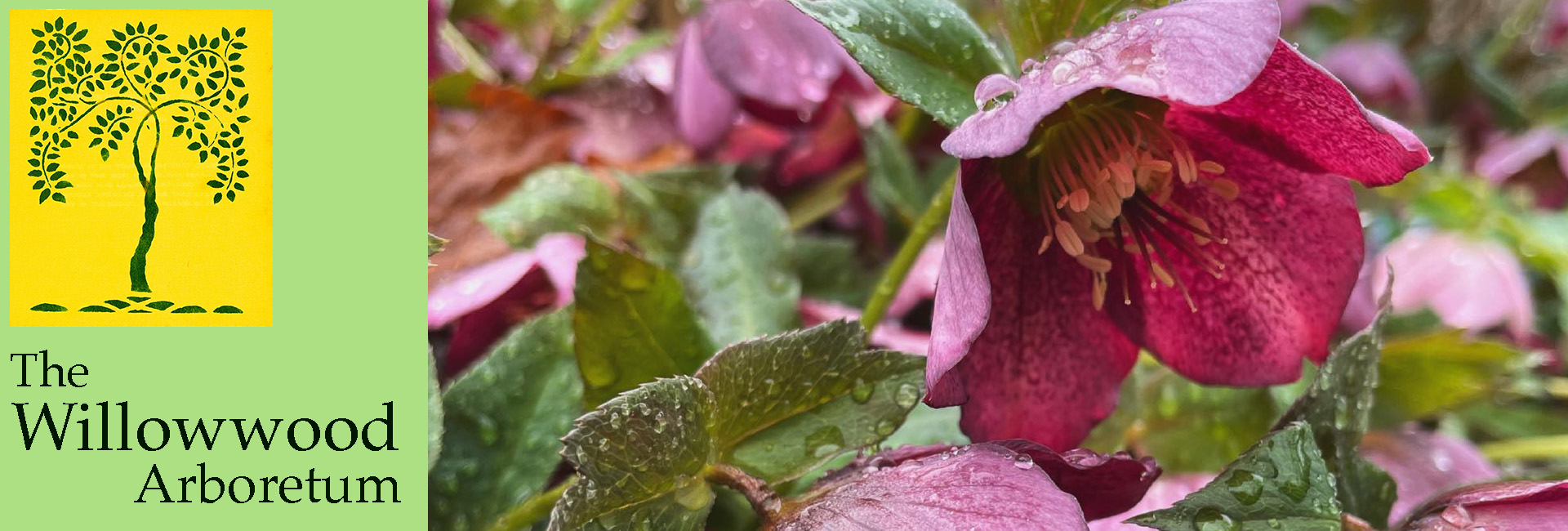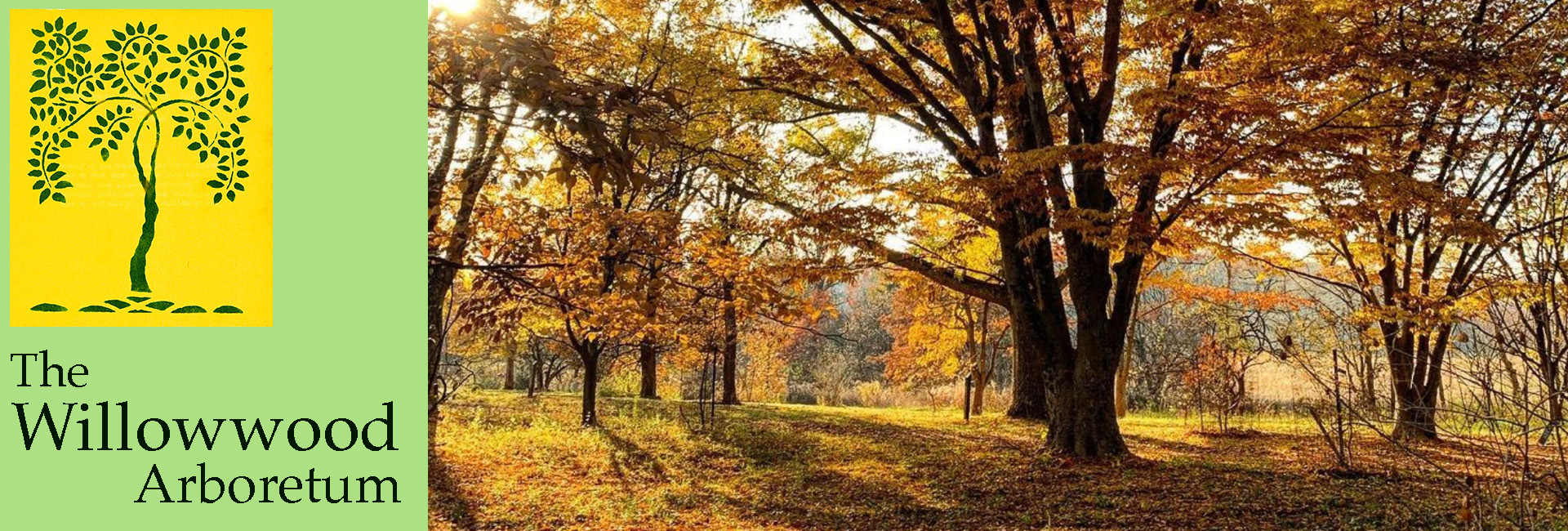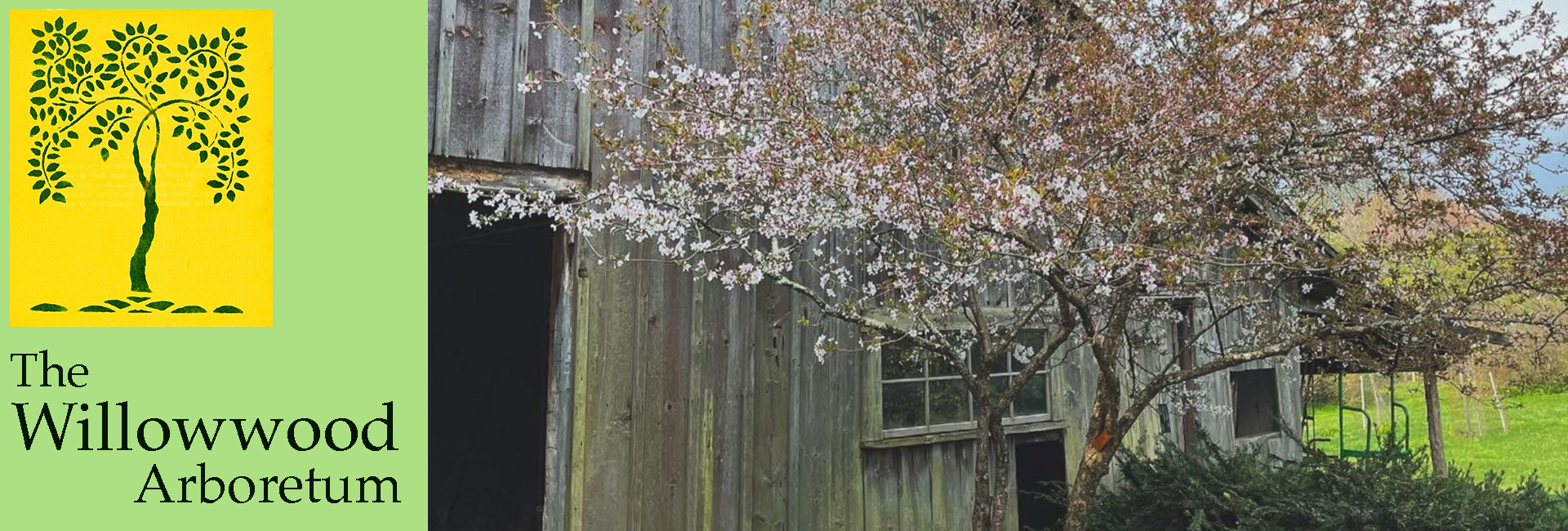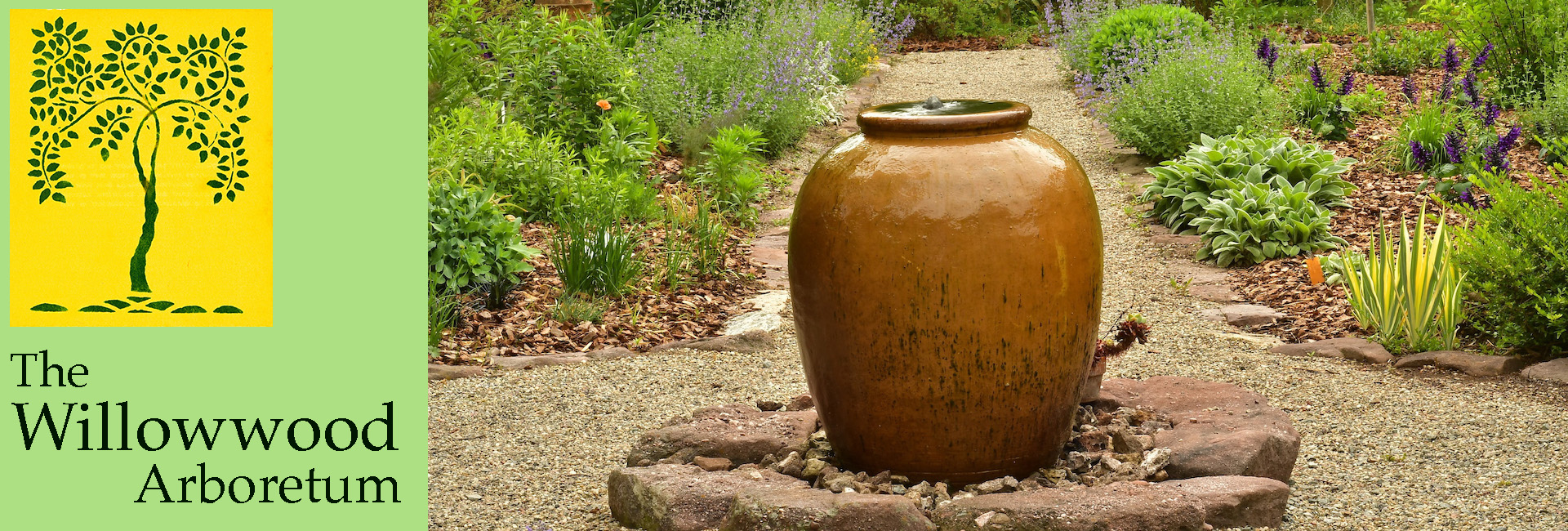Remember that May is International Lilac Month
Lilacs have been a garden favorite for years and often evoke nostalgic feelings of home and childhood. Walt Whitman lyrically extolled the lilac as “tall‐growing with heart‐shaped leaves of rich green, With many a pointed blossom rising delicate, with the perfume strong I love, With every leaf a miracle…” in his 1865 poem “When Lilacs Last in the Dooryard Bloom’d”.
Lilacs have been cultivated for over 300 years and have survived the test of time. Much of their history originates in Asia and Europe. They were brought over to the Americas as early as the 1600’s to become the spectacular plant that is today part of our heritage.
Fragrance, hardiness, bloom, names, childhood memories and even dates -everyone has their reasons to feel an attachment to lilacs and that is why they are so widely planted and are part of North American history. Some past presidents such as Thomas Jefferson made note in his writings about the lilacs in his garden back in 1767 and so did George Washington in 1785.
The most common lilacs we all know and usually refer to as French hybrids are the Syringa vulgaris. The specie originated in Eastern Europe and was found in the wild for the first time in 1828. It was previously cultivated for centuries before in Turkey. In 1563 it was brought over to Vienna where many of the nurserymen began to make selections and name clones in the late 1880’s. One family, the Lemoine’s did many crosses in the late 1800’s and early 1900’s at their family nursery in Nancy, France. Since then many other very dedicated hybridizers have done work on lilacs like Father John Fiala, Fenecchia, Havemeyer, Skinner, Preston, Kolesnikov and numerous others.
Willowwood Lilacs (edited 4/2021):
The Willowwood Lilac Collection, one of the “Key” Collections, is located northwest of the Stone Barn and includes some of the best lilacs (genus Syringa) for growing in north-central New Jersey. Flowering begins in late April and continues through mid June (based on the vagaries of Mother Nature, of course!). The Willowwood Foundation gifts a lilac to each attending guest at the May Lilac Party Fundraiser, a Sunday afternoon garden party in the tradition of the Tubbs and then later with Dr. Ben Blackburn, greeted the coming of Spring each year with a large party under the blooming and so very fragrant lilacs.
Syringa ‘Bailbelle’ Tinkerbelle TM PP12,294: Dense and compact beauty with loads of wine-red flower buds that open to a striking deep pink in mid May. Great fragrance and form make this a multi-purpose landscape head-turner. Terrific, fragrant, profuse bloom & disease resistant. Nice foliage. Grows 4-6’.
Syringa ‘Betsy Ross’: Fragrant white blossoms are produced in early May on a bushy, rounded shrub 6-8′ tall. Resistant to powdery mildew and well adapted to warm climates. Developed by Don Egolf at the National Arboretum by crossing Syringa oblata with S. vulgaris and released in 2000. Early bloomer.
Syringa ‘Colby’s Wishing Star’: a compact dwarf bush lilac with extremely fragrant, soft pink clusters of florets that blooms repeatedly starting mid-spring. Perfect for mass planting and hedges. Blooms profusely each spring; with deadheading, it will bloom again in summer and fall. Grows 4′ x 4′.
Syringa subsp. patula ‘JN Upright Select’ Violet Uprising TM PP28,959: a new introduction (2020) selected for its upright habit and heavy flowering habit. Typically, taller than broad, this selection is an exceptional choice for hedging in a sunny location. The intoxicatingly fragrant violet flowers are lighter in color than Miss Kim Lilac and larger, averaging 12 inches long and 6 inches across. Age to white. Grows 4-6’.
Syringa ‘Red Pixie’: Dark reddish purple blooms fade to a pale pink. compact lilac, baring masses of fragrant pink flowers, which open from red buds. Perfect for a small garden it may also be grown in a large pot. This is a seedling of S. julianae ‘Hers’ that may have crossed with S. meyeri.
Syringa x chinensis (Chinese Lilac): This graceful lilac is much more delicate and profuse in its flowering than Syringa vulgaris, and consequently tends to be one of the better selections for midwest plantings.
Syringa x chinensis ‘Alba’: Exotic small tree that has white flowers with green foliage and prefers a part-full sun position in a general soil Height:2 to 4 Width:2 to 3
Syringa x chinensis ‘Red Rothomagensis’: a naturally sterile deciduous shrub that is cloned to use in the USA-NPN (National Phenology Network) study to determine the effects of climate in different locations on the phenology or seasonal changes of genetically identical plants. It has opposite, simple, ovate-lanceolate leaves (to 3″ long). Its tiny, reddish-purple flowers are grouped into showy, fragrant, terminal, long clusters. Grows 12 to 16 feet tall and 8 to 12 ft. wide.
Syringa x henryi ‘Lutece’: Medium violet, mid season bloomer.
Syringa x henryi: An upright, deciduous shrub with broadly lance-shaped, dark green leaves and panicles of strongly fragrant, light purple to lilac-pink in late Spring.
Syringa x hyacinthiflora ‘Annabel’: This cultivar bears large heads of fragrant, double pink flowers. Developed by John Fiala. One of the best pinks.
Syringa x hyacinthiflora ‘Blanche Sweet’: Fragrant whitish-blue blossoms with traces of pink bloom early. This Syringa oblata x S. vulgaris hybrid was developed by Father John Fiala. The foliage is resistant to powdery mildew.
Syringa x hyacinthiflora ‘Buffon’: early blooming, pink flowered.
Syringa x hyacinthiflora ‘California Rose’: Can grow to 15-20’ and spread to 10’. Late Spring. offers dark pink buds turning to pale lilac pink flower clusters. A Descanso Hybrid Lilac bred by Sobeck with ‘Lavender Lady’ ancestry for the warmer Southern California climate. Registered in 1966.
Syringa x hyacinthiflora ‘Declaration’: (Early Flowering Lilac) is an upright, deciduous shrub with incredibly showy panicles, 15 in. long (37 cm), packed with wonderfully fragrant, single, dark dramatic reddish-purple flowers from the US National Arboretum.
Syringa x hyacinthflora ‘Excel’: 1935 introduction from renowned hybridizer Frank Skinner of Dropmore, Manitoba. Bears large conical clusters of fragrant lilac-purple flowers early to mid- spring.
Syringa x hyacinthiflora ‘Lamartine’::Early flower fragrant rosy pink blossoms
Syringa x hyacinthiflora ‘Lavender Lady’: Lavender blue lilac in full bloom will add a sweet spicy aroma to that spring evening.
Syringa x hyacinthiflora ‘Mount Baker’: has large, fragrant panicles of pure white, single blooms. Introduced by Frank Skinner in 1961.
Syringa x hyacinthiflora ‘Old Glory’: has abundant fragrant bluish-purple flowers with improved disease tolerance. A release by the National Arboretum’s breeding program, it has the genetic makeup to stand up to sweltering heat and high humidity. Sweet fragrance in early Spring.
Syringa x hyacinthiflora ‘Purple Glory’:a rambunctious bloomer incredibly dependable and floriferous, it’s also a stunner sporting big cones of bluish-purple, fragrant flowers with a heavenly aroma. Mid May bloom. Grow to 15’.
Syringa x hyacinthiflora ‘Sweetheart’: Blooming early it regales you with rich dark maroon blooms turning powder to light pink with double flowers in huge wondrously fragrant clusters. An interspecific hybrid with hyacinthiflora heritage. Introduced in 1953 by Clarke.
Syringa josikaea (Hungarian Lilac): a spreading multi stemmed shrub, native to Hungary and Romania with lilac-violet flowers. Blooms in late May.
Syringa komarowii subsp. reflexa: Distinctly pendulous cylindrical clusters of flowers. The seed pods curve upwards, which is the basis of the Latin ‘reflexa’. Flower buds are usually carmine, but on opening the flowers gradually fade to almost white.
Syringa x laciniataNoted for its heat tolerance and mildew resistance, (Cutleaf Lilac) is a deciduous shrub of graceful, rounded habit, with loose panicles, 3 in. long of fragrant, soft lavender-violet flowers in late spring.
Syringa meyeri: “discovered” in China by Frank Meyer during a visit in 1909. Pink lavender flowers provide a wonderful distinction against dark green foliage, which begins as burgundy in spring.
Syringa x meyeri ‘Josee’: Introduced by Minier Nursery of France in 1976, this is a dependable re bloomer and offers fragrant panicles of lavender pink, trumpet shaped, in May. Grosws to 4-6 feet tall and is very hardy and mildew resistant. glossy dark green foliage.
Syringa meyeri ‘Paliban’: Rounded and very dense deciduous shrub, covered with a profusion of fragrant, lavender pink flowers in mid-spring.
Syringa microphylla: bears lilac-pink flowers in spring and again in summer. Pairs of small, downy, oval leaves line the upright to arching branches of this twiggy, medium-sized shrub.
Syringa pubescens ssp. microphylla ‘Superba’: This fragrant cultivar bears single rose-pink flowers in midseason, and often reblooms in late summer or autumn.
Syringa oblata: The City Flower of Hohhot, Inner Mongolia. The pale purple flowers have a very special fragrance.
Syringa pubescens subsp. patula ’Miss Kim’: – Grown from seed collected in Korea, a heavy bloomer with feathery light lavender flowers with dark green foliage that turns burgundy red in Fall. A great choice for a garden.
Syringa pekinensis: (Peking Tree Lilac) An uncommon species with large creamy white flowers, blooms in early June. Native to Beijing. This is one of the so-called “tree lilacs”. Our specimen was planted in 1952 and is 35′ tall, and has a trunk that is 12″ in diameter with a papery exfoliating bark.
Syringa x prestoniae ‘Agnes Smith’ Introduced by Dr. Owen Rogers at the University of New Hampshire in 1970, this is one of the finest white lilacs.
Syringa x prestoniae ‘Ethel M. Webster’: Bred by Isabel Preston in Ottawa in 1930 but only introduced in 1951 with name registered in 1953. Often classified as a x prestoniae hybrid, this is in fact a cross of S. komarowii ssp. reflexa and a lilac mislabelled ‘S. wolfii’ originating from the Lemoine Nursery in France. Bearing large clusters of tubular pink flowers resembling those of x prestoniae in late season, it often may have a repeat crop of flowers in Autumn. a compact semi-dwarf shrub growing to 1.8 m.
Syringa x prestoniae ‘Francisca’: Developed in the 1920’s features deep purple single blossoms.
Syringa x prestoniae ‘James MacFarlane’: (Preston Hybrid Lilac) Large heads of pink flowers are produced late in the season.
Syringa x prestoniae ‘Minuet’: Dense, rounded form, slow grower, fragrant light purple blooms with exceptionally profuse bloom production.
Syringa x prestoniae ‘Redwine’ (Preston Hybrid Lilac) Large panicles of bright magenta blossoms in late season. Developed by Isabella Preston.
Syringa emodi: Robust upright shrub from the mountains of northern India. Oblong-elliptic leaves and pale lilac or white flowers.
Syringa pubescens (Clove Lilac) An early bloomer. Native of northern China with lilac pink blossoms.
Syringa pubescens ‘George Eastman’ A true color breakthrough with magnificent wine-red buds, which open to deep cerise-pink flowers! At only 4-6 feet mature height, this superb dwarf Lilac fits perfectly in smaller spaces.
Syringa pubescens ssp. patula (Korean lilac), is a shrub with purplish flowers.
Syringa reticulata (Japanese Tree Lilac) Bark is like a cherry tree- reddish brown with prominent lenticels. Leaves of Chantilly Lace are deep green with light green markings and light yellow margins. Flowers are creamy white, fragrant, on very large panicles.
Syringa reticulata ssp. Amurensis (Amur Tree Lilac): small tree or large shrub that offers showy, fragrant, creamy white flowers that bloom in upright panicles in late spring to early summer (later than most other lilac species). Native to Korea and eastern Russia. Reticulata means netted-veined in reference to the leaf veins.

Syringa x prestoniae “Donald Wyman”: Features showy panicles of lightly-scented fuchsia flowers rising above the foliage in late spring.

Syringa reflexa: Distinctly pendulous cylindrical clusters of flowers. The seed pods curve upwards, which is the basis of the Latin ‘reflexa’. Flower buds are usually carmine, but on opening the flowers gradually fade to almost white.
Syringa reticulata ‘Ivory silk’: Showy plumes of fragrant creamy white flowers rise above the foliage from late spring to early summer with dark green foliage.
Syringa sweginzowii: Native to Northwest China. Late flowering with rosy lilac flowers fading to pale pink.
Syringa tomentella: One of the most delightful, late spring- to summer-blooming, deciduous lilac native to western China. Sweetly scented with deep lilac pink flowers.
Syringa x tribrida ‘Lark Song’: Medium pink flowers bloom in spring – grows 8-12’.
Syringa villosa: Rosy pink blooms in late May with coarse foliage and grey bark.
Syringa vulgaris: Fragrant May bloomer with lilac flowers
Syringa vulgaris ‘Adelaide Dunbar’: Introduced in 1916. Sweetly fragrant double purple flowers with dark bright green foliage. Mildew resistant. Named for New York park horticulturist John Dunbar ‘s wife (the man responsible for creating “Lilac City” in Rochester), this classic variety has never been equaled.
Syringa vulgaris ‘Agincourt Beauty’: has deep purple fragrant single flowers with very large florets—in fact the largest of all lilacs. It is one of the best purple available today. This lilac cultivar is an upright, deciduous shrub that is easily grown in full sun.
Syringa vulgaris ‘Alba’: Spreading deciduous broadleaf shrub. Has fragrant pure white flowers. It’s an old time favorite and one of the oldest lilacs in our collection. Our records claim this plant was acquired by Henry and Robert tubs in 1910 from the garden of their grandmother in Kingston, PA.
Syringa vulgaris ‘Albert F. Holden’: A Father Fiala introduction features deep lilac-violet blooms with a silvery blush on the reverse of the petals giving it a bi color effect. Heavy fragrance.
Syringa vulgaris ‘Andenken an Ludwig Spaeth’ has lovely slender panicles of dark, purple- red flowers. The Royal Horticultural Society has given it their prestigious Award of Garden Merit. Late Spring bloom. Strongly fragrant.
Syringa vulgaris ‘Aucubaefolia’: deciduous, unusual variegated foliage and double blue fragrant flowers that bloom in late May. Bees and Butterflies just love this lilac!
Syringa vulgaris ‘Avalanche’: Single white, large upright flowers.
Syringa vulgaris ‘Belle de Nancy’: Medium green, ovate to heart-shaped leaves. Fragrant flowers are mauve and double. Appears in late spring to early summer.
Syringa vulgaris ‘Capitaine Baltet’: medium green, ovate to heart-shaped leaves with single, magenta flowers. Extremely fragrant flowers appear in late spring to early summer. Native to eastern Europe, cultivated since 1563.
Syringa vulgaris ‘Charm’: has single pink very fragrant flowers, blooming in Late Spring. Very hardy. Native to eastern Europe, cultivated since 1563.
Syringa vulgaris ‘Charles Joly’: This common lilac cultivar is an upright, deciduous shrub which grows 8-15′ tall. Deep reddish-purple, sweetly fragrant, double flowers are arranged in dense, pyramidal, terminal clusters (panicles) which cover this shrub in late April to early May
Syringa vulgaris ‘Congo’Double, sweetly scented, red-purple upright flower spikes in mid spring. This heirloom lilac, a profuse bloomer, is an excellent choice for a shrub border.
Syringa vulgaris ‘Edward J. Gardner’: is considered to be extraordinary and one of the very finest double, pink lilacs.
Syringa vulgaris ‘Father John Fiala’: Yellow buds open as creamy white. fully double, large flowers
Syringa vulgaris ‘Fiala Remembrance’: Yellow buds open to fragrant clouds of large, fully double, creamy white flowers in Mid/late May – a fitting tribute to Fr. Fiala. Well utilized as hedges.
Syringa vulgaris ‘Firmament’: A blue lilac introduced in 1932 by famed French Breeder Victor Lemoine. In late spring it produces outstanding fragrant, large, single, pale-sky blue flowers.
Syringa ‘Gortenziya’Fragrant, single lilac flowers, very good. Mid-season. Kolesnikov 1930.
Syringa ‘Katherine Havemeyer’ Award-winning: an upright, deciduous shrub, spreading with age, with dense panicles packed with lightly scented, double, lavender-purple flowers which fade to lilac-pink. Grows 8-10’
Syringa vulgaris ‘Krasavitsa Moskvy’: A queen among lilacs, a superb double pale pink to white with lavender tinted buds. It was introduced by Leonid Kolesnikov in 1974.
Syringa vulgaris ‘Léon Gambetta’ Introduced in 1907, it is one of the best purples with double blossoms.
Syringa vulgaris ‘Lucie Baltet’: Light pink flowers bloom in late spring to early Summer. Very fragrant.
Syringa vulgaris ‘Madame Lemoine’Regarded as one of the best white lilacs, award-winning Syringa vulgaris ‘Madame Lemoine’ is an upright, deciduous shrub with large, showy panicles packed with amazingly fragrant, double, white flowers.
Syringa vulgaris ‘Marie Frances’:A compact lilac with a single very fragrant salmon-pink flower introduced by noted breeder, Fr. Fiala.
Syringa vulgaris ‘Monge’a Lemoine lilac first introduced in 1913. It typically matures over time to 8-12′ tall and as wide. It is noted for its spring (April-May) bloom of fragrant, single, deep reddish-purple flowers that bloom in showy panicles (each to 9” long).
Syringa vulgaris ‘Nadezhda’: A cultivar from Russia its name means hope. Bred in Russia for its superior habit, length of bloom and sumptuous, fully double, large blue very fragrant flowers.
Syringa vulgaris ‘P.P. Konchalovskii’: Large shrub or small tree. Bred by the most prolific of Russian hybridizers, Leonid Kolesnikov, this was raised from ([‘Victor Lemoine’ x ‘Jules Simon’] x ‘President Poincare’) and introduced in 1956. Very fragrant, fully double blue tinged flowers.
Syringa vulgaris ‘Paul Thirion’ features deep reddish-pink, double flowers arranged in large clusters with thick green foliage.

Syringa vulgaris ‘President Grevy’: A classic French Hybrid Lilac with double, lilac-blue, large fragrant flowers that bloom in May.
Syringa vulgaris ‘Primrose’: This unique cultivar bears slightly fragrant, creamy yellowish blossoms in midseason.
Syringa vulgaris ‘Ruhm von Horstenstein’ (Glory of Horstenstein): single, magenta flowers, extremely fragrant.
Syringa vulgaris ‘Sensation’: In midseason this unique cultivar bears slightly fragrant, single magenta purple blossoms with distinct white candystripe margins.
Syringa vulgaris ‘Taras Bul’ba’: A rare beauty with double iridescent lavender red buds that open to exquisite triple florets.
Syringa vulgaris ‘Vestale’: Lovely fragrant white flowers. Award of Garden Merit by Royal Horticultural Society.
Syringa vulgaris ‘Violet Glory’: Deep violet
Syringa vulgaris ‘Wedgwood Blue’: Wedgewood blue blossoms develop from lilac-pink buds borne in beautiful wisteria-like hanging racemes. Introduced by Father John Fiala in 1981.
Syringa vulgaris ‘Yankee Doodle’:One of the darkest purple lilacs with showy clusters of fragrant, dark purple florets that appear in mid-spring. Excellent for cut flower arrangements. Grows 8-10’.
Syringa wolfii: (Wolf’s Lilac) pink to purple flowers
Syringa yunnanensis: This upright deciduous shrub bears fragrant, pale pink to nearly white flowers in large panicles in early summer.
